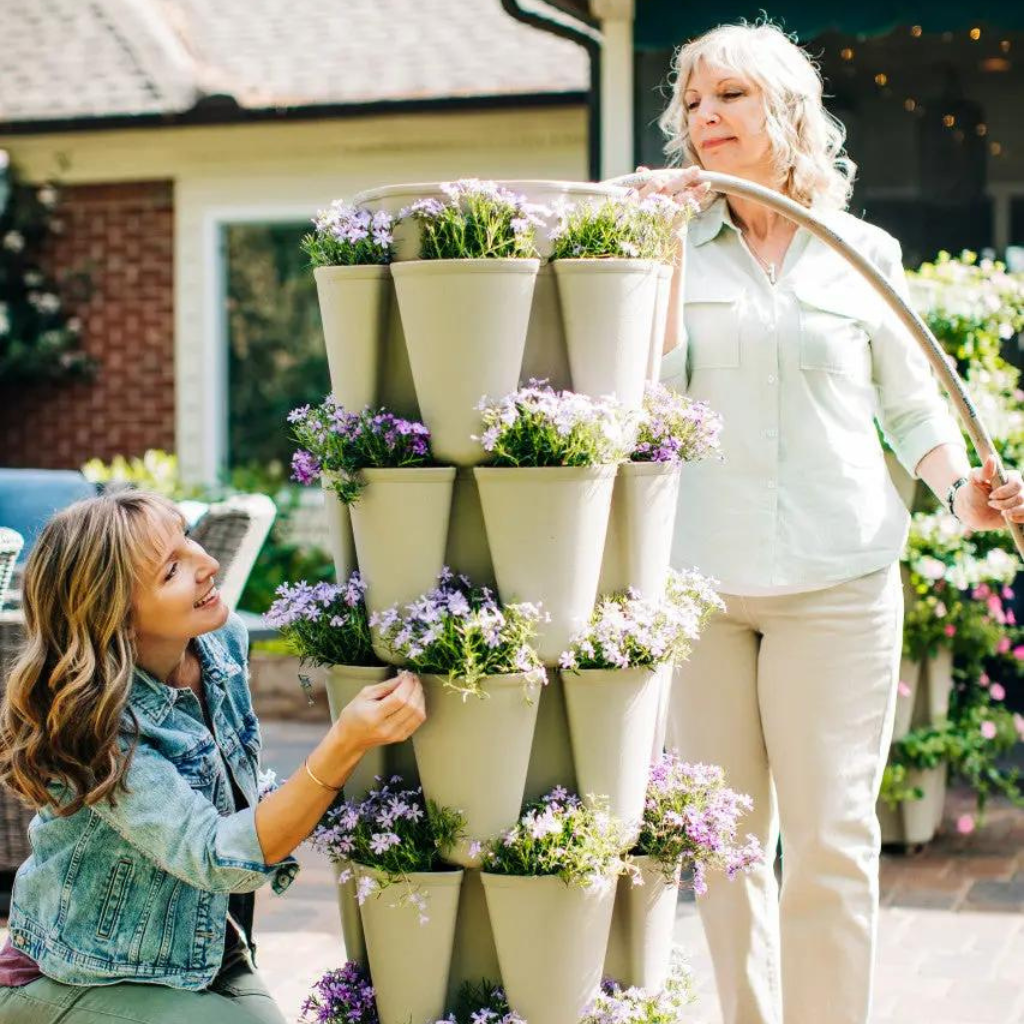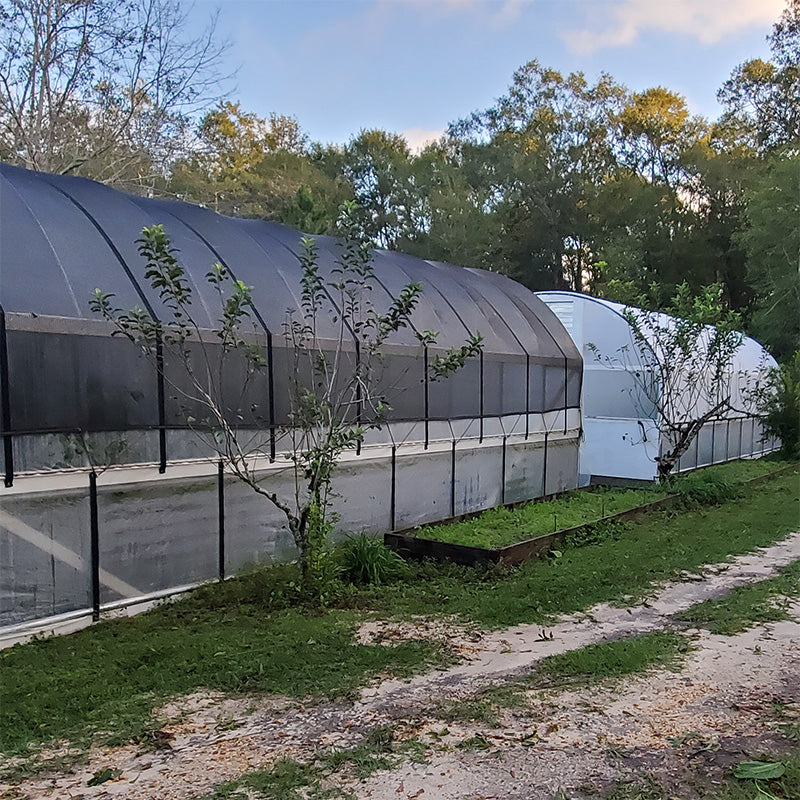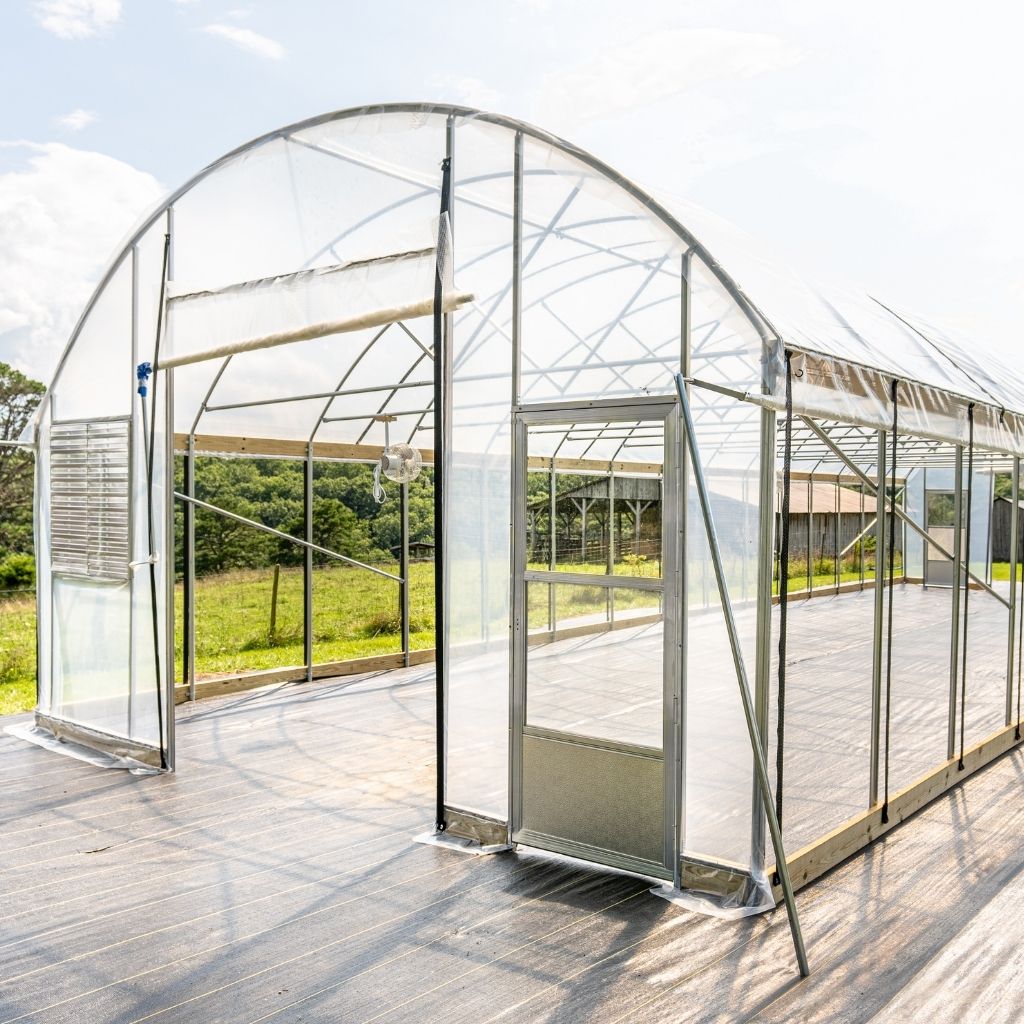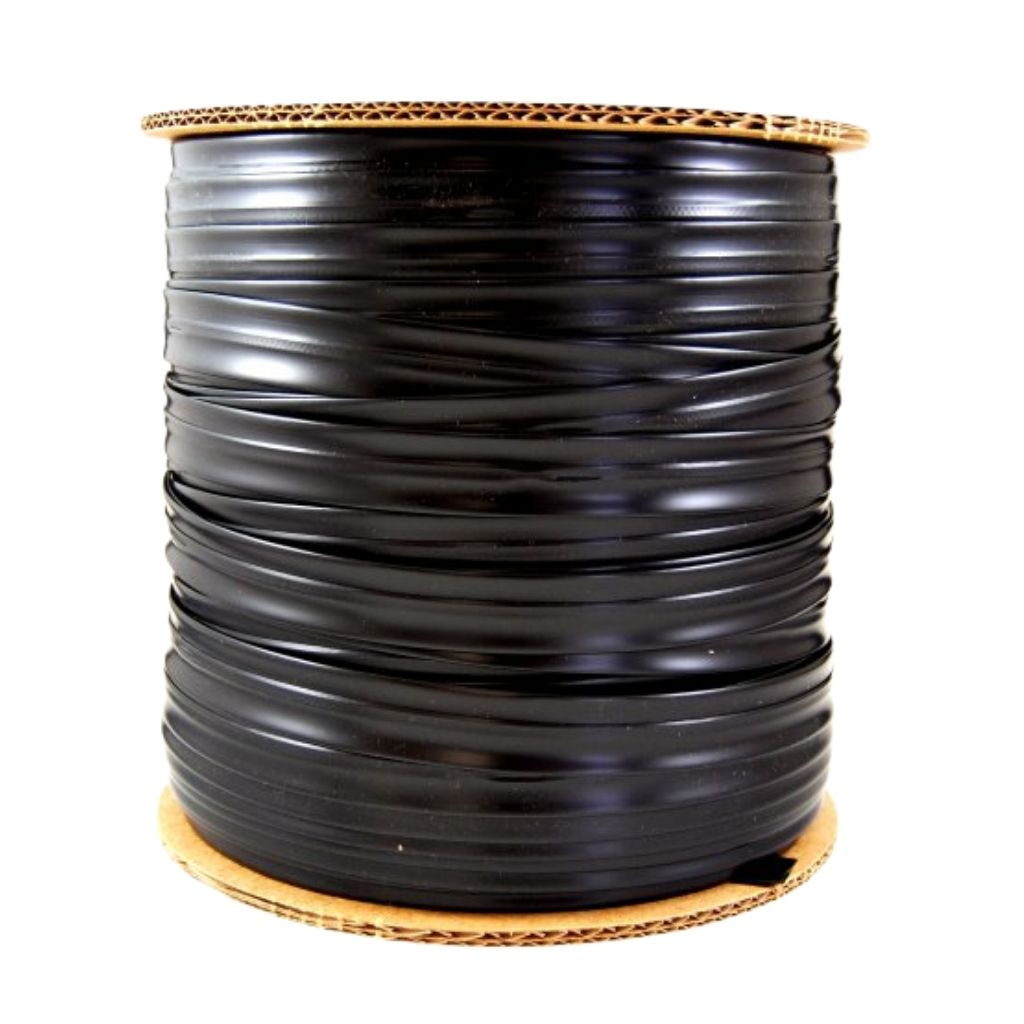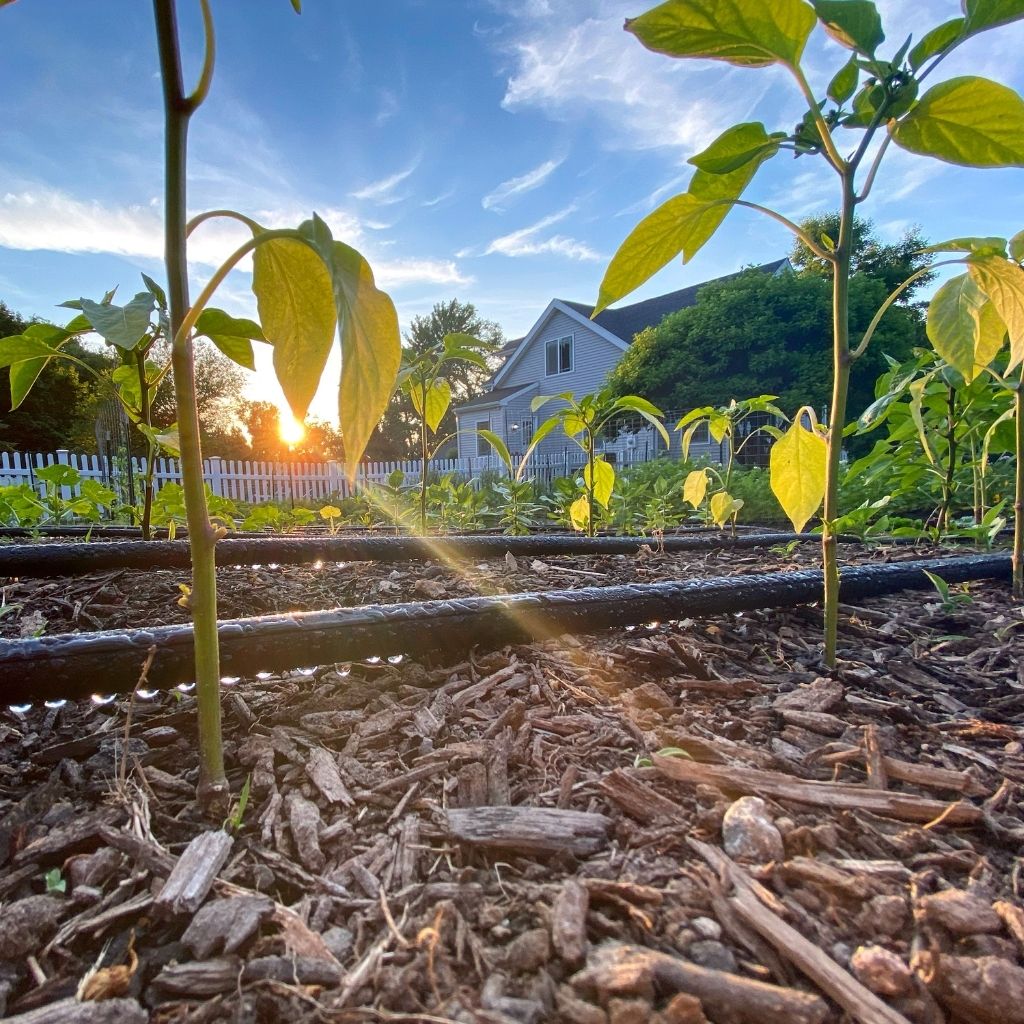The Farmer's Square
A Farmer's Square is an adaptation of the carpenter's framer square. As a framer's square is used to do accurate measurements, and straight lines, the Farmer's Square organizes rows of lettuce greens in a balanced way. The concept generated from a need to organize a simple rotation system for managing a staged crop harvest. A simple raised bed that was not in use here at the Growers Solution greenhouse facility was the inspiration for the method.
This is an example of a traditional row planting:

To begin with, build a frame from wooden beams. This can be any size, shown here in this article are 2''x8'' screwed together to make a rectangle of about 3' x 6'. I suggest making it out of thinner boards for easier lifting because the Farmer's Square will be periodically flipped or lifted over throughout the season. Overall dimensions of the frame are based on the gardener's physical ability. Lifting something heavy can be detrimental and counterproductive in the long term, so choose thin ½-inch boards for the length, and heavy, thicker boards for the end pieces to provide strength, and durability. I suggest making a frame that is roughly 3'x6' and 1'' thick cut of lumber as it fits three high-density rows of greens within the walls of the Farmers Square. Upon finishing the frame, we built a raised bed without permanently securing it to the ground.

The importance of the frame for the Farmer's Square method are for organization, insulation, prevention of evaporation and wind protection, and improved overall growth rate. It is a stencil to draw your lines correctly, and the garden soil is the media, or paper, to sew your lines of edible greens within the boxed wall. Every week, simply flip the frame over next to the established seed rows. The rows of greens, here arugula and red oak leaf lettuce, fit nicely within the borders of the frame. Removing weeds out of the box is also easier on the gardeners mind because working out of the box requires less work than removing weeds from the rest of the garden area until you need to work in. You can easily remove rocks out of the farmer's square also, compared with the entire garden working space. The thick wooden walls, although heavier than most would need, improve insulation, keeping thermal heat within the root zone longer than no walls at all.

These walls support a spun polyester cloth, or even plastic that creates a temporary greenhouse effect, which speeds up the germination and root establishment of the intended sewn crop. Evaporation is slowed, and wind is almost completely blocked from drying, moving, and disrupting the seed growth. The rows sewn across from the framers square in a traditional method without additional frames, covers took more than twice as long to germinate as the seeds sewn in the Farmers Square. The lettuce sewn in the Farmers Square practically caught up in growth rate compared to rows planted almost 2 weeks earlier without a wooden box.
Now we have covered the importance of the Farmer's Square concept, we can delve in how to make it work for the average family gardener interested in an abundant rotation of salad greens, and root bound vegetables. Once you have completed construction of the frame, the system formula must be started, and adjusted depending on the gardener's preferences, weather, and work ethic. Here we have sewn Arugula, Red Oak Leaf lettuce, and Kyoto Mizuna within the borders of the Farmer's Square.

Begin by smoothing out the surface of the soil. Remove rocks, weeds, clumps of dirt, and add in worm castings, top soil, or potting soil, and sand if there is too much clay. For root vegetables, sand is an important addition to the area you plan on preparing. Place the Farmer's Square frame a corner of the area you plan on working in to begin the process.
Once the Farmer's Square is settled in its position where it will stay for about 1-3 weeks depending on the growth rate of the greens sewn. Rake it with a leaf rake to even out the soil, and make it a powdery texture.
Pictured here is a 4-row seeder that speeds up the process of seeding, but the traditional method of sewing by hand can still be implemented.

As you can see, the seeder has made consistent rows that fit nicely within the frame. With your hands, gently cover the rows with

the dirt that was removed from cutting the rows or taking a bag of potting soil and cover with a very thin layer the surface. Covering the seed with soil could probably be avoided because of the spun-polyester cloth, or covering that will be attached to the frame.

Water in gently. We used a Dramm 1000 Redhead water breaker because of the raindrop effect produced by this watering head I highly recommend it as an economical way to gently water seeds because it "has over 1000 micro holes that create an ultra-soft flower shower which will not disturb delicate soil".
Dramm 1000 Redhead Water Breaker

The final step requires a type of covering to go over the top for the frame for 2-5 days. Spun polyester, or row cover, and some people even call it a frost blanket must be placed over the top of the frame.


Any covering would be perfectly effective at preventing dry out from evaporation. Here we have a picture of the crops two weeks after this method was used to sew the seed.

The frame has been flipped and now we will repeat the whole process the rest of the season.





